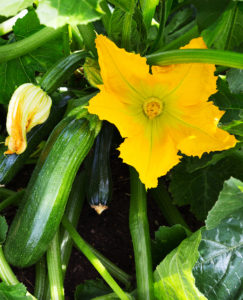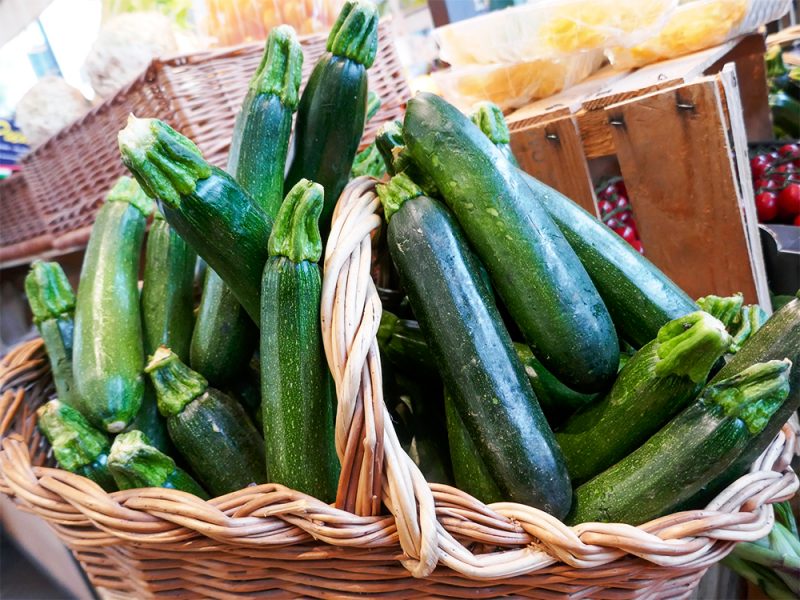
Background
Zucchini is a popular crop with some surprisingly fast growing varieties. As the second entry in our quick crop guide, we’re looking to put some substantial plants alongside our radishes that will continue to produce throughout your self-isolation.

Originating in Mesoamerica alongside squash and pumpkins, zucchini hopped the Atlantic in the mid 2nd millenium. From there, it was bred and cultivated in Northern Italy into its modern form, where it also acquired its name. Zucchini is derived from “zucca”, Italian for “pumpkin” and “squash”.
Zucchini are a subset of summer squash, which all fall into the Cucurbitacae family. Their close relatives in the genus Cucurbita include pumpkins, squash, and some gourds, while their extended family encompasses bitter melons, watermelons, cucumbers and loofah. Specifically, Zucchini is Cucurbita pepo, one of five species in the genus.
Being a summer squash, Zucchinis are harvested when immature and still growing. You *can* let a fruit grow until it is massive in size, but at that point are sacrificing flavor for yield. The guidance for any specific variety will vary, but generally picking at 6”-8” will give you the most flavorful plant. Zucchini is versatile in its use, you’ll find a plethora of recipes online. Personally, nothing beats fried zucchini for me, but I’m sure we’re all a bit health conscious being all cooped up, so maybe steam or roast them instead. Or with parmesan to split the difference.
Planting and Growing
A popular variety of summer squash, zucchini is a versatile crop with a mild flavor, soft interior, and crisp skin. Zucchini can quickly take over an indoor garden with its large size, so it is important to limit your zucchini to a 3-5 gallon container.
• Plant directly into the final growing container, zucchinis are finicky with transplants
• Use well draining, fertile soil and top dress fertilizer as the plant grows
• Keep soil consistently moist, zucchini are heavy feeders
• Full sun required, put this plant under light
• Ideal soil temperature is between 70-95F
• Set up a trellis in or adjacent to your container to support vines/bushes and keep fruit from growing on the floor.
One quirk to growing zucchini inside is pollination. Specifically, zucchini has male and female flowers, and inside without birds, insects, or bees, you will need to hand pollinate your zucchini. This might be new to you, but its a fairly easy and even fun task!

Sexing zucchini flowers is simple. Male flowers will have a short stem, while female flowers will be produced at the end of a small fruit. Another simple way is to check for pollen. The male flowers will contain the pollen used for hand-pollination.
After you identify your male and female flowers, your next step is clipping off a male flower and removing the petals. By doing this, we expose the pollen covered portions of the male flower. If you don’t want to cut any flowers, use a small paintbrush to transfer pollen.
Use this flower (or paintbrush) like a paintbrush. Delicately touch and roll the pollen onto the center of the female flower. Try to get a decent amount of pollen on the stigma of the female flower. Here, we are being the bumblebee, lather, rinse, repeat. Do this for all of the female flowers on your plant.
Harvest
Zucchini will continue to produce throughout the growing season, so it is important to monitor the development of the flowers on your plant.

• Pick when fruits are 6-8 inches long, large zucchinis may look impressive but retain little flavor. Harvest at 3”-6” for baby zucchini, the most tender and flavorful time
• Use a sharp knife to cut zucchini to prevent excess damage to the plant when harvesting
• If you want, pick some flowers as they form. Zucchini flowers can be used in cooking as well (best fried).
• Keep zucchini in a refrigerated space after harvest for up to 8-10 days.
Seeds
Most zucchini will take between 45-60 days to go from planting to maturity. Below are links out to external sites and seed sources we’ve used in our HTG Supply stores and our HQ. These varieties have been selected for their quick yield.
Johnny’s Seeds
Dunja – Organic, early, powdery mildew resistant, 47 days
Green Machine – Uniform, medium green with light flecking, 45 days
Noche – High yielding, dark-green fruits, spineless plant, 48 days
Southern Exposure Seed Exchange
Black Beauty – Semi-spineless, black green, freezes well, 48 days
Tender Gray – Gray-green mottled skin, excellent flavor, 42 days
Good Eatin’
Zucchini can be as simple or complex a dish as you’d like. There are plentiful ways to prepare this crop, linked out below are a few lists or recipes to get you started thinking.
Cooking Channel – 25 Ways to Use Zucchini
A Family Feast – Zucchini Bread
Bon Appetit – Fried Zucchini Blossoms
Review
Zealously zip-up zany zucchini this summer of social distance in your indoor garden. While this crop will take up a decent bit of space, the yield from a well grown plant will pay back in spades (or more accurately pay back in zucchini but you get the point). If I could get away a whole season eating nothing but fried zucchini blossoms, I’d do two things. One, I’d visit the ER for eventual severe malnourishment, and I’d stop writing quick crop guides hungry. Before my boss chastises me for “getting sloppy in that last paragraph” go ahead and toss some zucchini seeds in the dirt! If you take our advice and grow some zucchini, let us know at [email protected] or on our Facebook, Twitter, and Insta!



